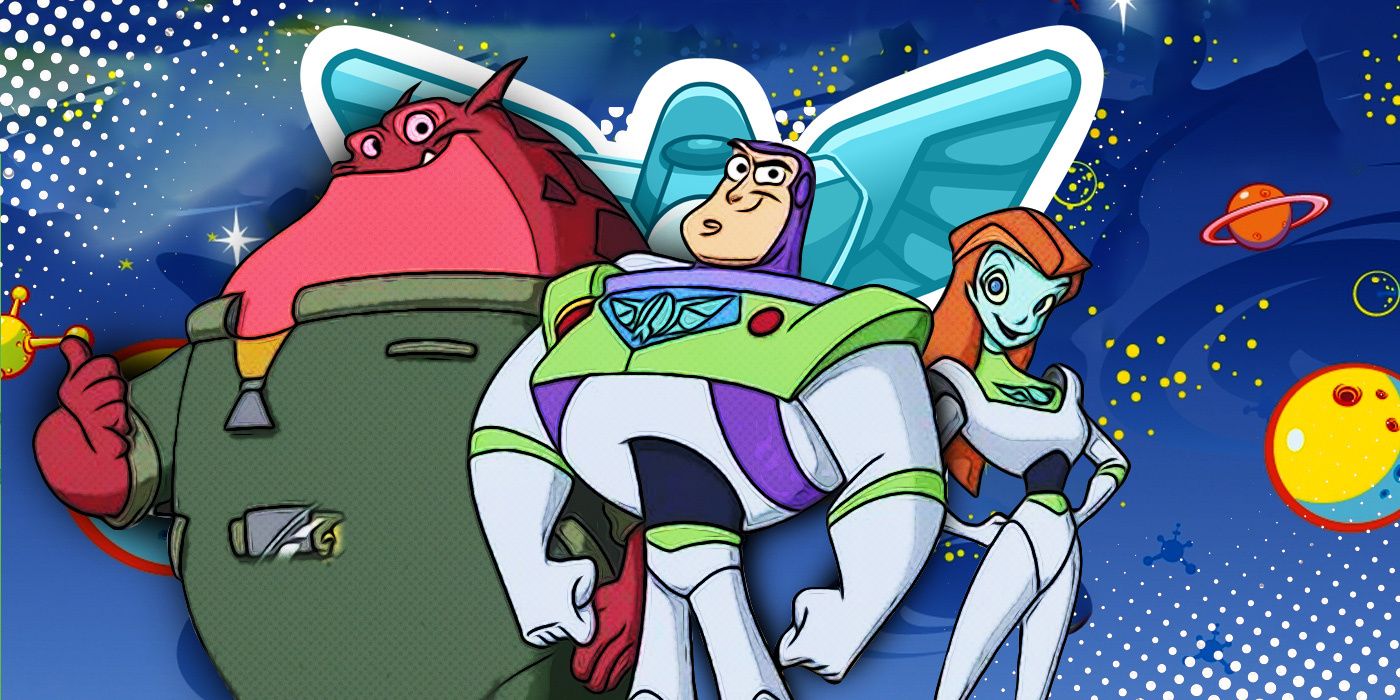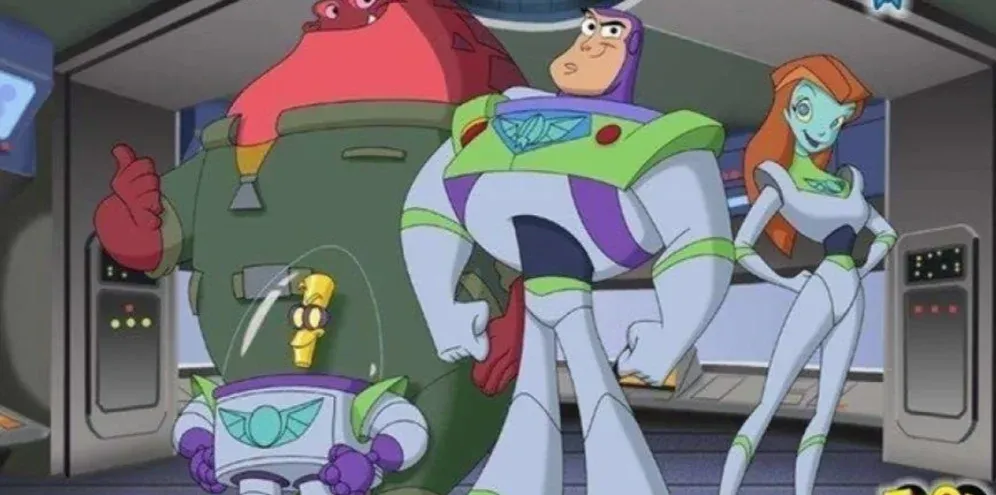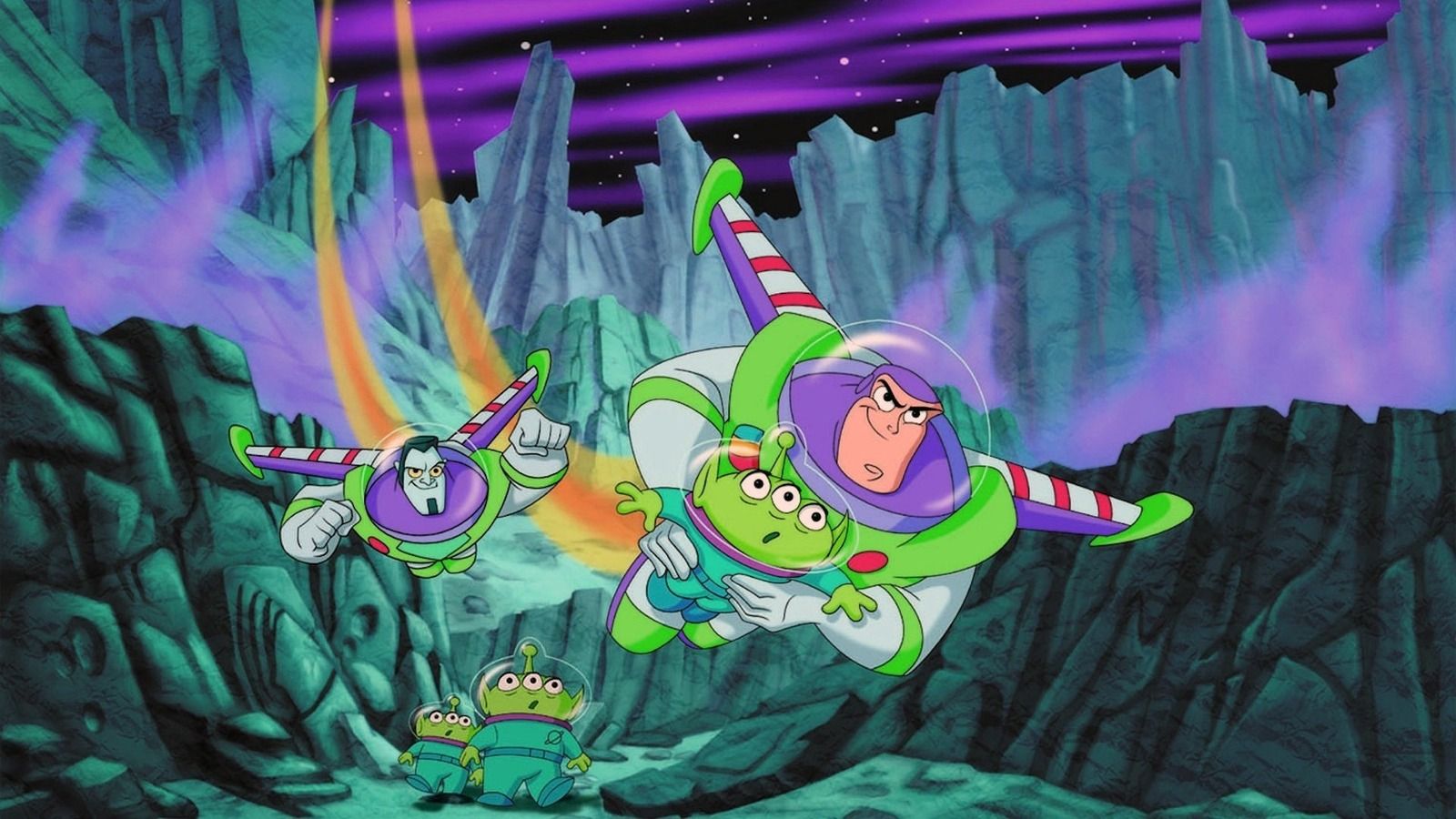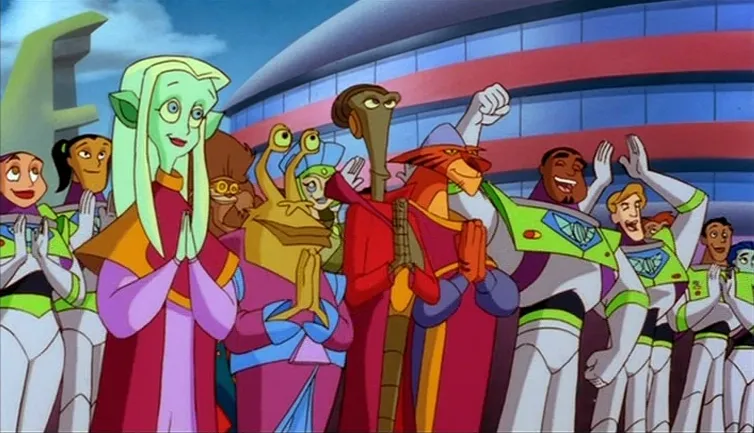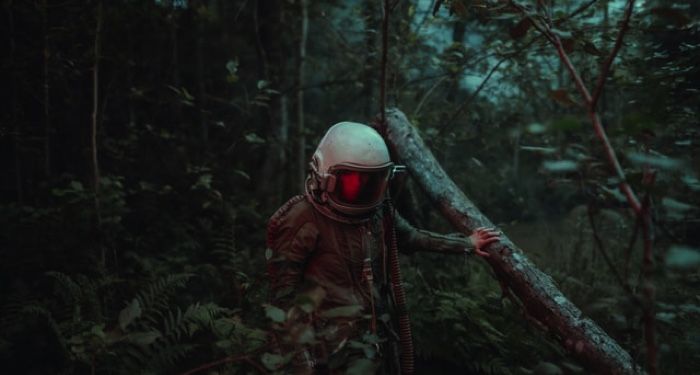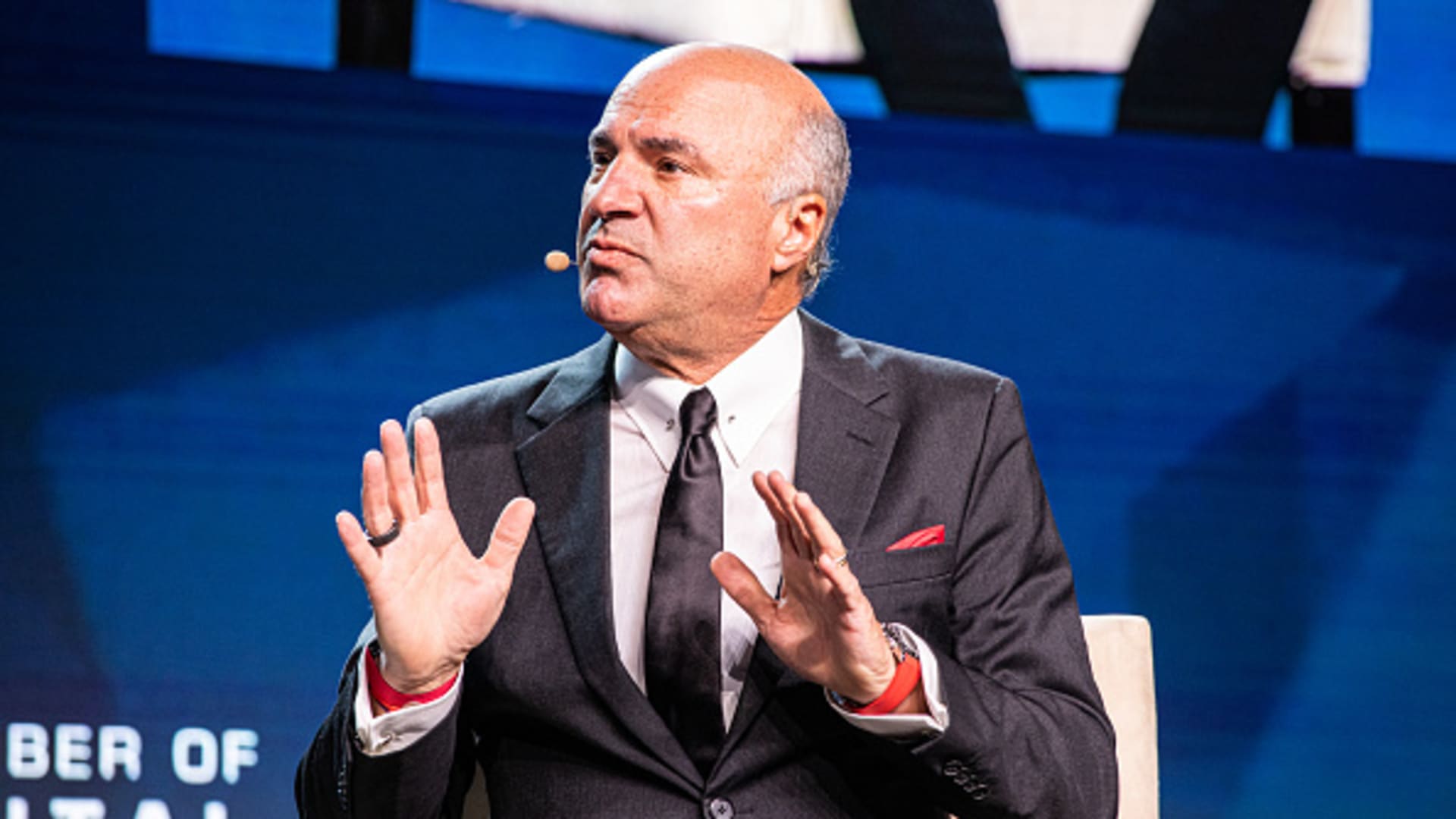Out of all the characters made popular by the Toy Story films, there’s none more exciting, more daring, or more full of potential than Buzz Lightyear himself. Originally played by Tim Allen, the iconic space ranger became a staple of every kid’s childhood in a way that Woody never really could. Of course, Disney saw this almost immediately and capitalized on the character’s popularity… and no, we’re not talking about Pixar’s latest sci-fi endeavor Lightyear, which follows Chris Evans‘ Buzz in an all-new origin story. Rather, much like how Star Wars has two different versions of The Clone Wars, Disney/Pixar have given us two different solo interpretations of the Star Command legend. While the Toy Story sequels struggled to figure out what to do with Buzz, his first solo venture – Buzz Lightyear of Star Command – made him into an action hero we could all grow to love.
Buzz Lightyear of Star Command began with a direct-to-video 2D animated feature film called Buzz Lightyear of Star Command: The Adventure Begins (later expanded into a three-part pilot for the series) which told the never-before-seen origin of the space ranger. As it turns out, Buzz (played first by Tim Allen, then Patrick Warburton) hates the Evil Emperor Zurg (Wayne Knight) not because he’s his father – sorry Toy Story 2 – but because he was responsible for the apparent death of his former partner, Warp Darkmatter (Diedrich Bader). Though, if his name didn’t give it away, it would soon be revealed that Warp is actually the double agent who has been working for Zurg the entire time. After Darkmatter’s betrayal, Buzz teamed up with a group of Star Command rookies, including the phasing Princess Mira Nova (Nichole Sullivan), the bumbling janitor-turned-ranger Booster (Stephen Furst), and the tricked-out robot known as XR (first Larry Miller, later Neil Flynn).
While Lightyear promises a single Buzz Lightyear adventure, Buzz Lightyear of Star Command produced a new one every week, each of them as exciting as the last. With recurring villains, various plot threads, and an ever-expanding universe to explore, Star Command was everything you could ask for in a Buzz Lightyear spin-off, and kids in the early 2000s ate it up. Who wouldn’t want to watch a sci-fi series about your favorite toy? And Disney knew it too; in fact, they counted on it. Unlike the countless cash grabs and spin-offs that hope to capitalize on our favorite films, characters, or stories, Buzz Lightyear of Star Command took the basic space ranger premise and truly made it its own. With completely original characters and stories that had no connection to the Toy Story universe, Star Command went above infinity and beyond what fans of the original Disney/Pixar film could have dreamed.
As the series progressed, Buzz’s rag-tag group of galactic misfits traveled the universe, facing off against a robotic energy vampire (called NOS-4-A2, by the way), a gravity-manipulating seductress, a multiplying bounty hunter, various evil counterparts, and the Evil Emperor Zurg himself. With 62 episodes worth of exciting stories, the series managed to make Buzz a bit more compelling and gave him more to do than ever. Although he remained an incredibly consistent character throughout Star Command, the space ranger still learned a few lessons in teamwork, humility, and responsibility along the way – all while imparting the same wisdom to both his partners and the weekly audience. If Buzz Lightyear of Star Command proved anything, it’s that the titular character could easily hold his own, and was a lot more engaging than the Toy Story films might’ve led you to believe.
Truthfully, without this series, a film like Lightyear might have never been considered. If the Toy Story movies introduced us to the space ranger, Buzz Lightyear of Star Command made him arguably even more popular. The 1989 Batman movie re-invented the Dark Knight for an entirely new audience; yet it was Batman: The Animated Series that propelled the vigilante as a cultural icon through the 1990s. Star Command did the same for Buzz Lightyear. Now, some of you might think this is a bit of an overstatement, that this short-lived animated series couldn’t have had that kind of impact on Buzz Lightyear, that the Toy Story movies did enough to make him an iconic hero. Yet, Buzz Lightyear of Star Command was immensely popular. With a successful toy line (which included Happy Meal toys as well as action figures, accessories, and apparel), a 3D video game, and an original direct-to-video feature, the series also aired regularly on the UPN, Disney Channel, and eventually Toon Disney throughout the decade, even winning a Daytime Emmy for Sound Editing.
But the real reason this series thrives is because of the relationships between Buzz and his supporting cast of Star Command rookies, known alternatively as Team Lightyear. Each member of Buzz’s crew is expertly designed to highlight or challenge the space ranger’s own character, desires, and personality, which only makes the show better. Princess Mira Nova – who trains at a higher level than even Buzz despite being a newcomer – challenges Buzz’s own pride and selfish/heroic ambition. The series makes it clear from the get-go that our favorite space ranger really likes being the hero, even willing to sacrifice his own life at a moment’s notice if it means getting the job done right. Mira Nova challenges this by, well, kind of being the exact same way, just occasionally better at it. As these two constantly attempt to one-up each other, they both begin to discover that being a hero is about a lot more than the glory; it is about having the best idea and being willing to work with others rather than being opposed to them. Plus, she’s something of a powerhouse and her “ghosting” ability was a fun addition that just works.
Unlike Mira, the Star Command janitor-turned-hero Booster Munchapper only became a space ranger in the first place due to accidentally being in the “wrong place at the right time.” Having dreamed of being a ranger since he was a boy, Booster waited years for his shot to prove himself to Star Command, Captain Nebula (Adam Carolla), and ultimately his own personal hero, Buzz Lightyear. Booster’s encyclopedic knowledge of the Star Command rules and regulations often proves to be a foil to Buzz’s own heroic notions. While Buzz is always trying to do the right thing, he often does so outside Star Command’s own rulebook. Having dreamed for years of being a ranger, Booster’s detailed understanding of Star Command code and Buzz’s own adventures often comes in handy, even if it means Buzz’s plans need some quick revisions.
Last, but certainly not least, the “Experimental Ranger” known as XR serves as a completely rebuildable partner who Buzz will never lose. Due to his trauma of losing his former partner, Warp Darkmatter, Buzz first refused a new partner, never wanting his own heroics put anyone else in danger. Yet, when he was presented with the robotic XR, Buzz cautiously accepted. Almost immediately, the robot was destroyed, though able to be repaired (albeit with some humorous defects). In fact, XR is often demolished on missions, but unlike other organic lifeforms, Buzz never has to worry about losing this space ranger, even if he does occasionally worry about the android’s overly-emotional personality. While Buzz is fairly single-minded and completely mission-oriented, XR provides the bit of comic relief Team Lightyear needs to keep spirits high.
Buzz’s struggle against Emperor Zurg on Star Command was one for the ages, always discerning the villain’s evil plots from afar. Truthfully, the dynamic between these two is legendary, and unlike in Toy Story 2, they never seem to get along – though they did team up once in the episode “War, and Peace and War,” though it didn’t last. But Zurg isn’t the only Toy Story character to join Buzz on his solo adventures, the Little Green Men (usually called “LGMs”) made their way onto this series too. These little guys basically keep Star Command afloat, and without them, it all begins to fall apart. Hilariously, even their mythic “claw” from Toy Story makes a cameo appearance in The Adventure Begins, this time used to summon their “Uni-Mind,” which serves to link their entire race together.
Of course, kids watched Buzz Lightyear of Star Command primarily because of Buzz Lightyear, and those who did were never disappointed. Buzz tackled some incredible enemies throughout his animated series (including an evil version of himself) and only proved that he was in fact the coolest of all Toy Story characters. But don’t expect to see much of the Toy Story version of your favorite hero as Buzz Lightyear of Star Command makes him their own. Don’t let that scare you though, his heroic personality is still intact. One of the biggest issues that Buzz faces in the Toy Story franchise is that he’s almost always (except for the original film) in Woody’s (Tom Hanks) shadow. While the cowboy always means well, his well-being, heroic journey, and personal desires carry the plot of each of the Toy Story sequels, leaving little for Buzz to do other than lead the rest of Andy’s toys in pursuit of saving his best friend. Star Command has no such issue, keeping Buzz front and center as the focus of his own story, and we couldn’t be happier about it.
If you’re a fan of the Toy Story films, and if you appreciate early 2000s animation, then there’s no doubt that Buzz Lightyear of Star Command is the animated series for you. Besides its exciting science fiction-themed world building, the series highlights everything you love about the titular space ranger while also challenging your immediate perceptions and preconceived notions of who he is at his core. Patrick Warburton might not be Tim Allen, but he’ll grow on you as you continue to share in their interstellar adventures. It’s a really fun show, and one you’ve got to see before letting Disney/Pixar’s latest Buzz Lightyear reboot tell you who the space ranger is.
























































![Key Metrics for Social Media Marketing [Infographic] Key Metrics for Social Media Marketing [Infographic]](https://www.socialmediatoday.com/imgproxy/nP1lliSbrTbUmhFV6RdAz9qJZFvsstq3IG6orLUMMls/g:ce/rs:fit:770:435/bG9jYWw6Ly8vZGl2ZWltYWdlL3NvY2lhbF9tZWRpYV9yb2lfaW5vZ3JhcGhpYzIucG5n.webp)


